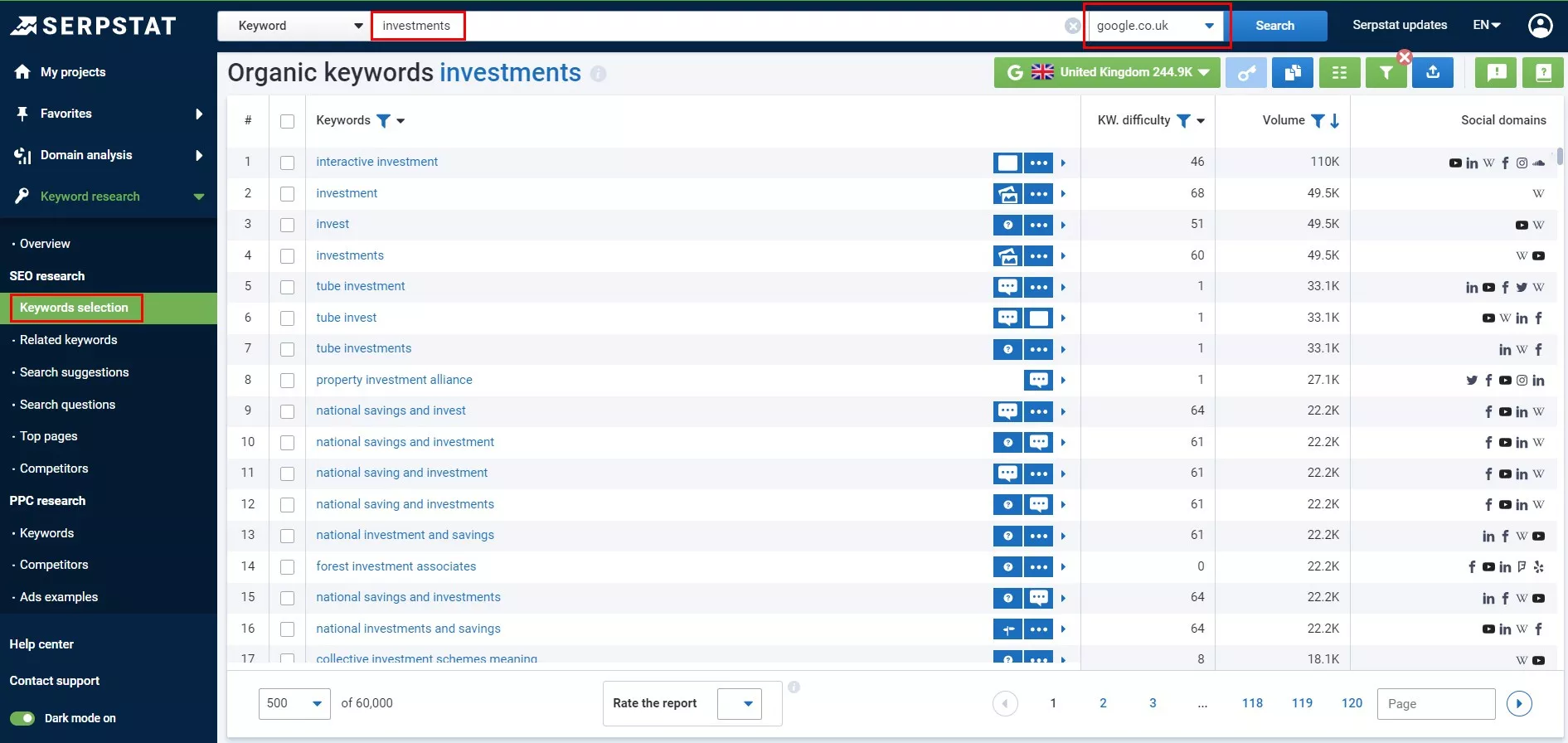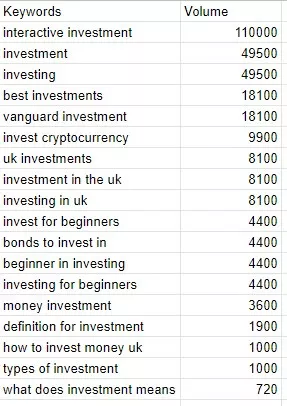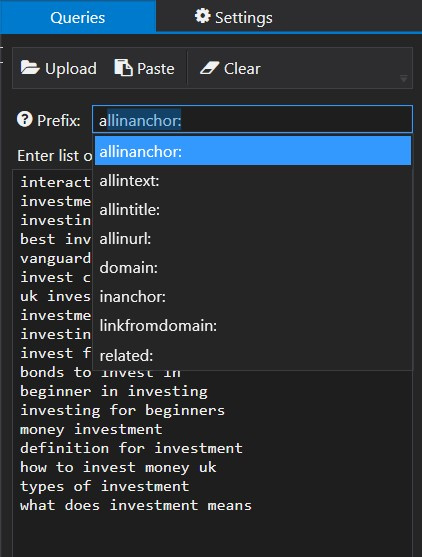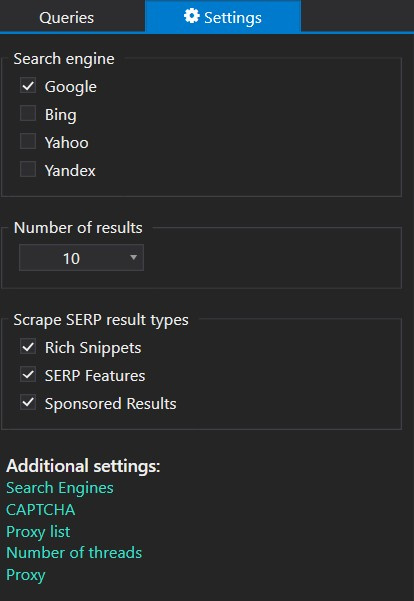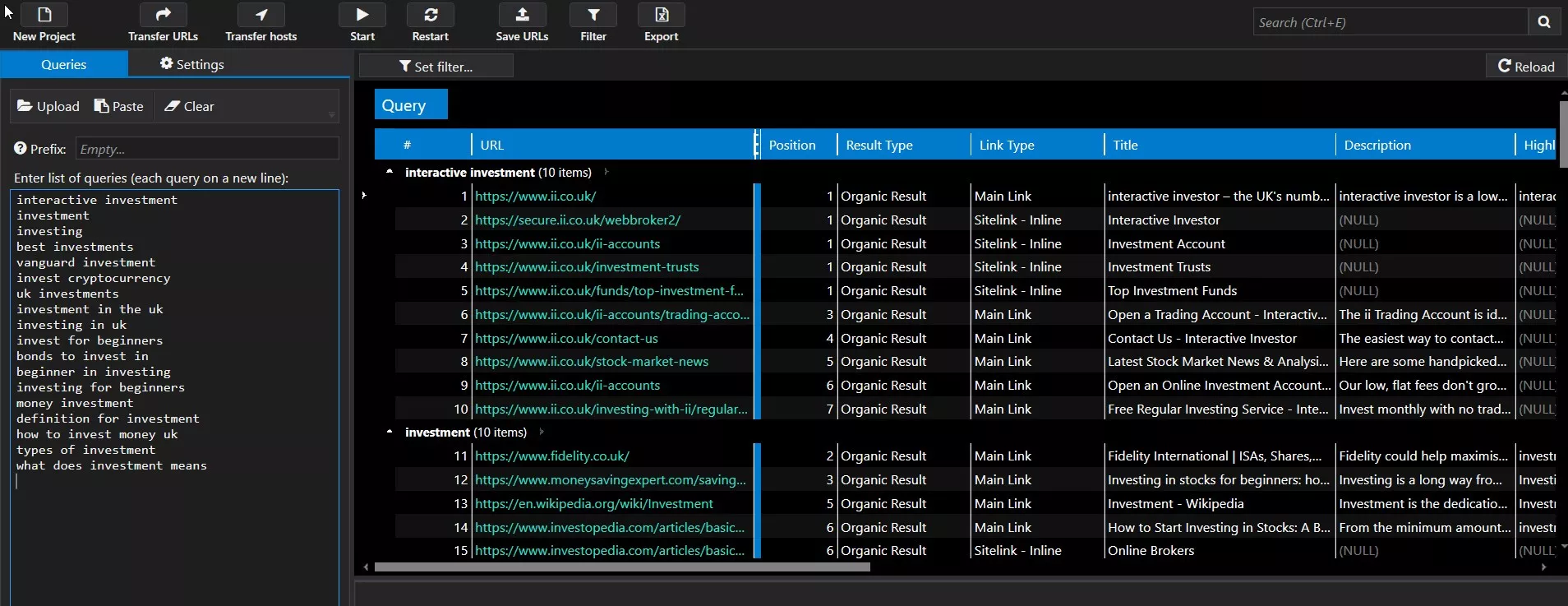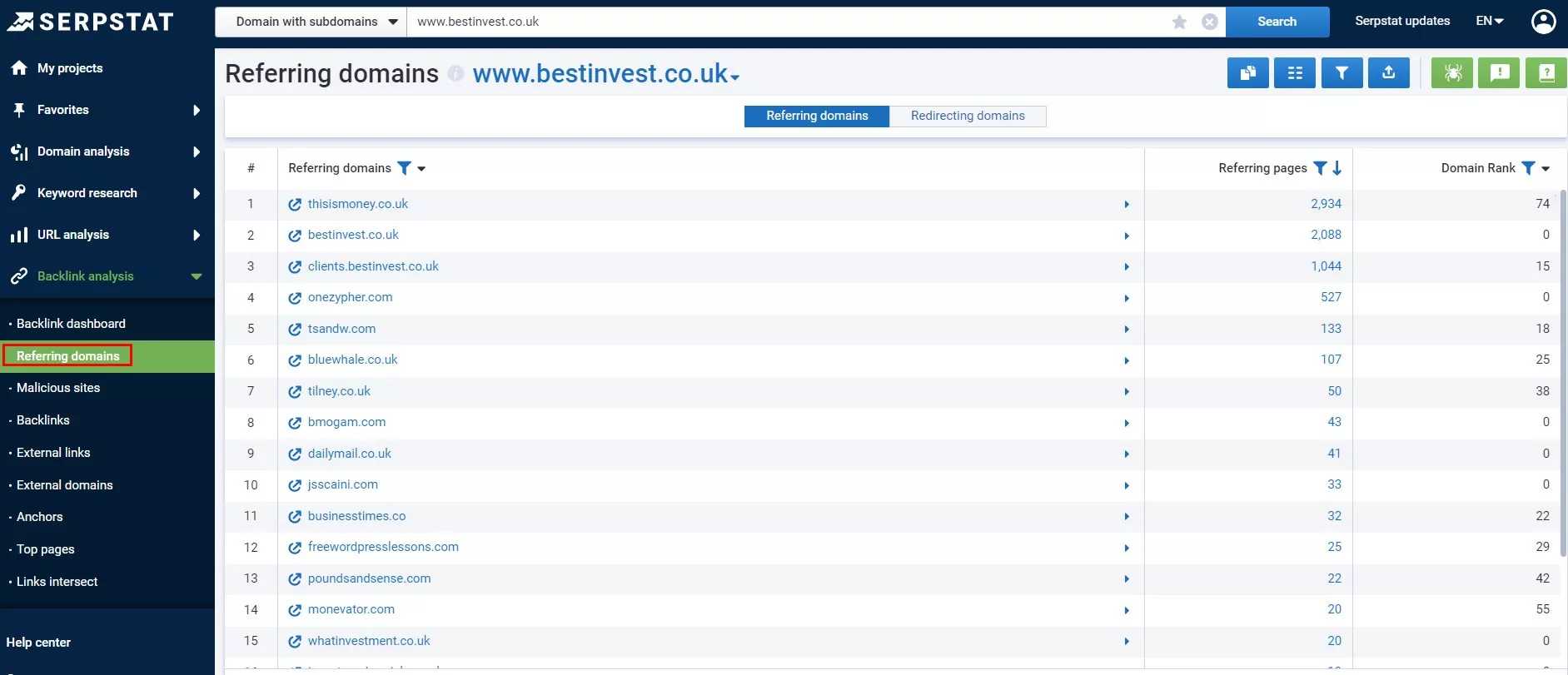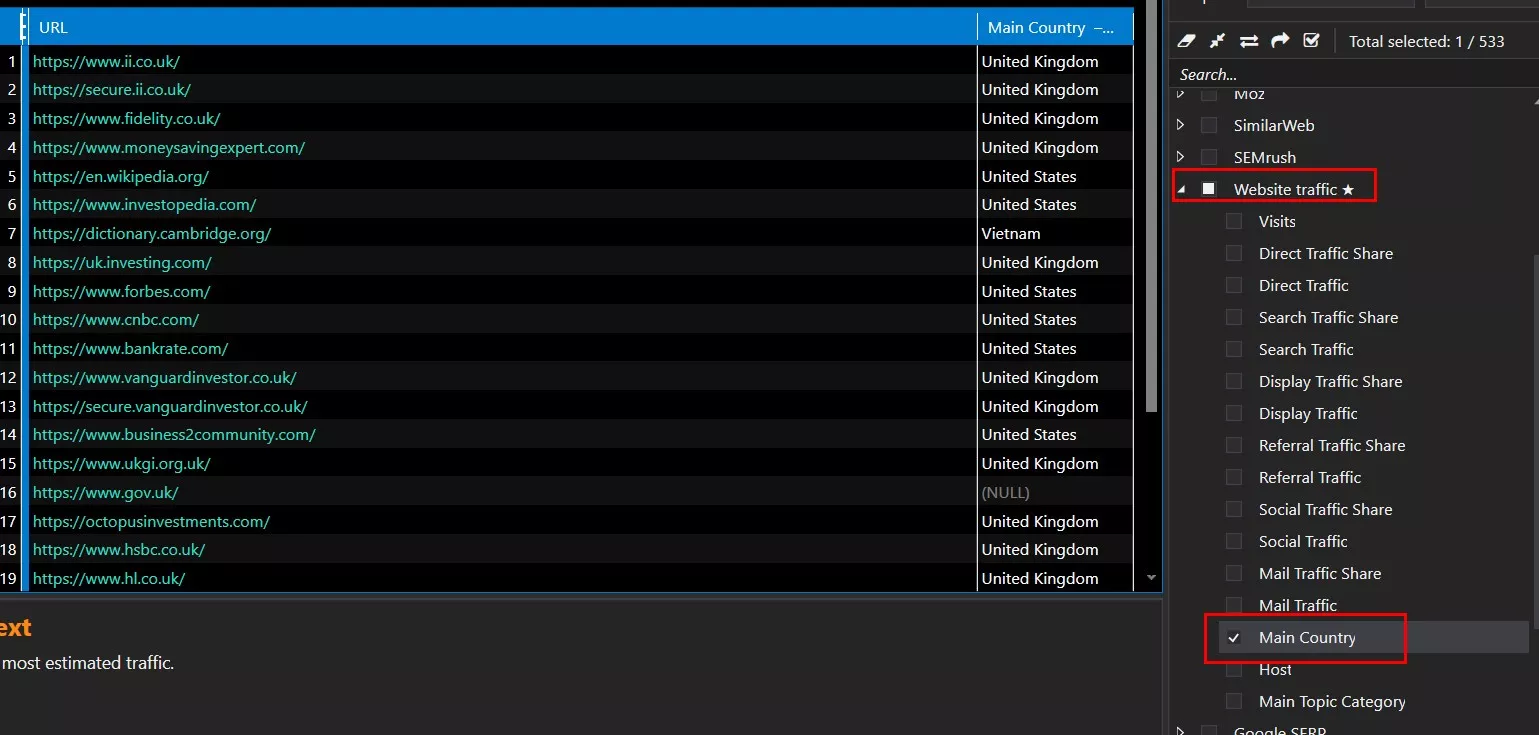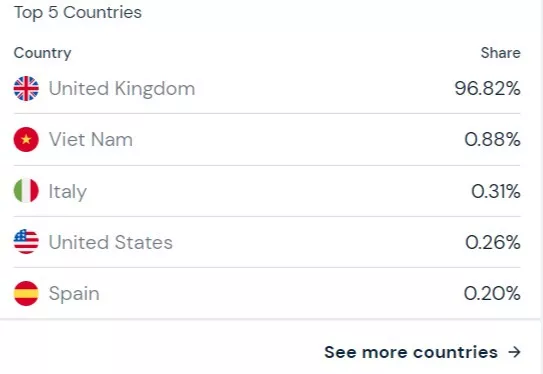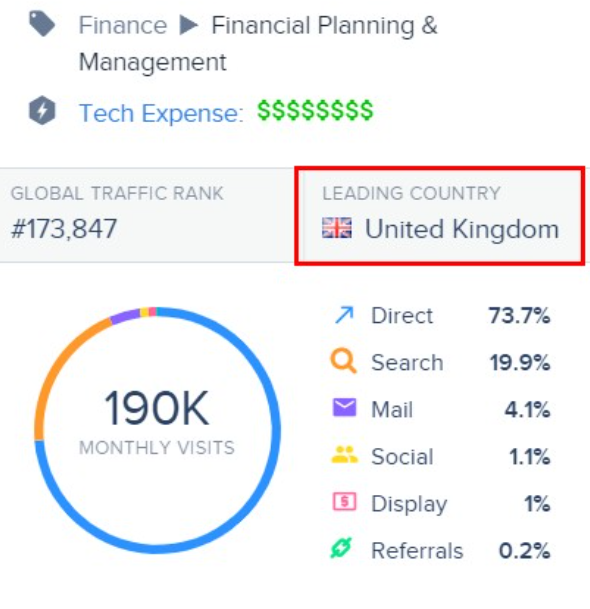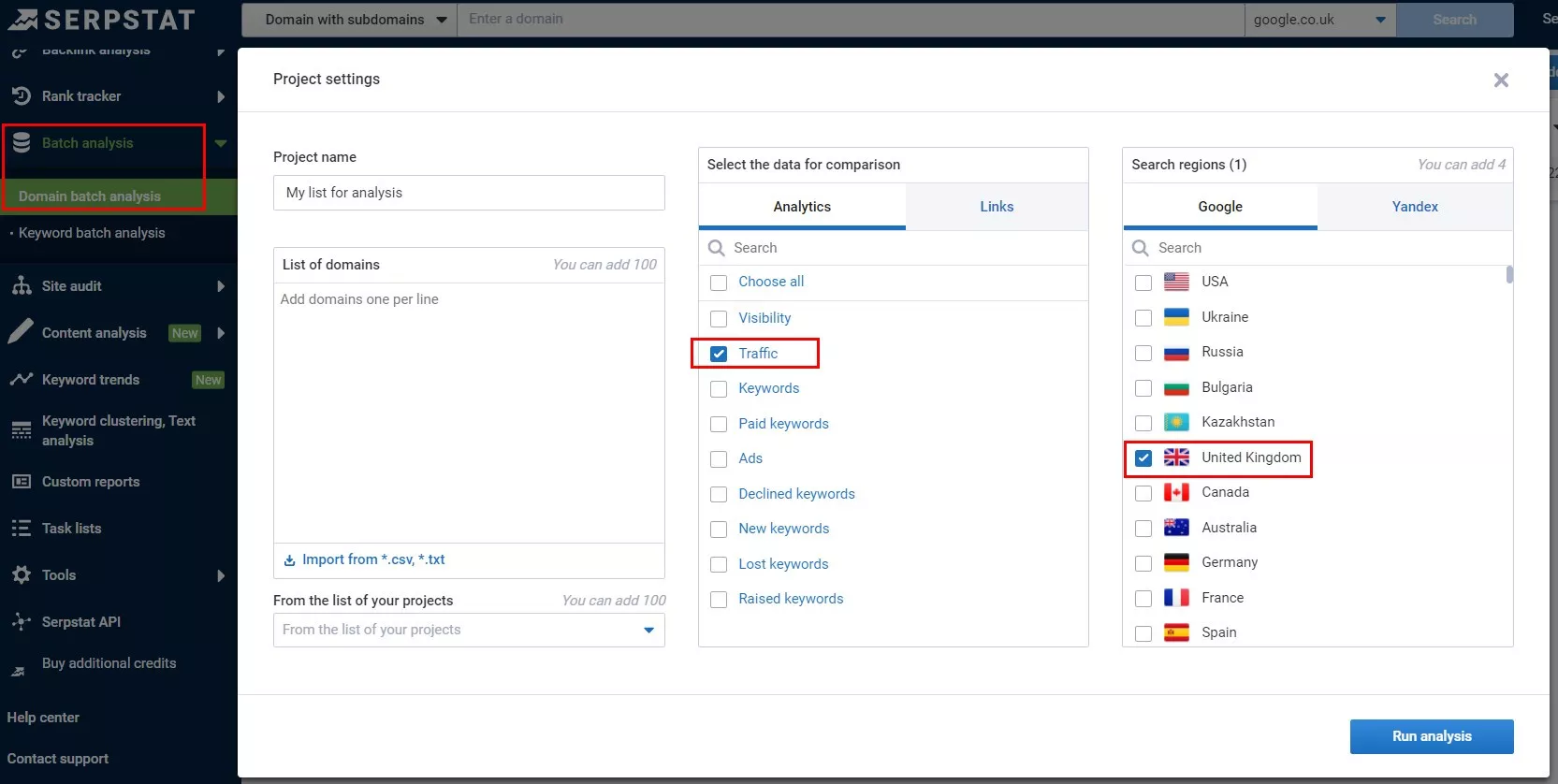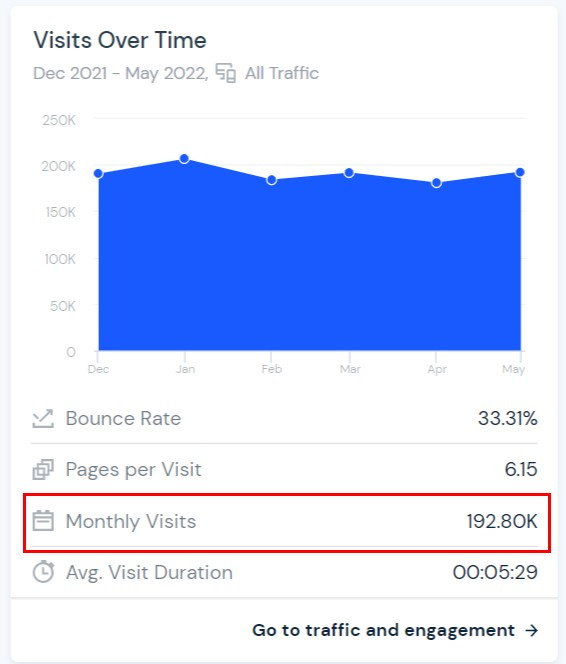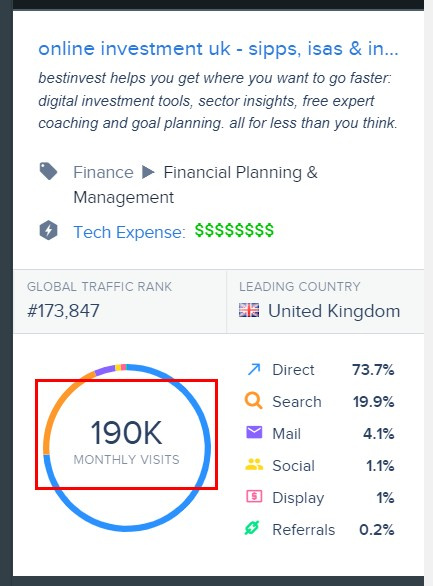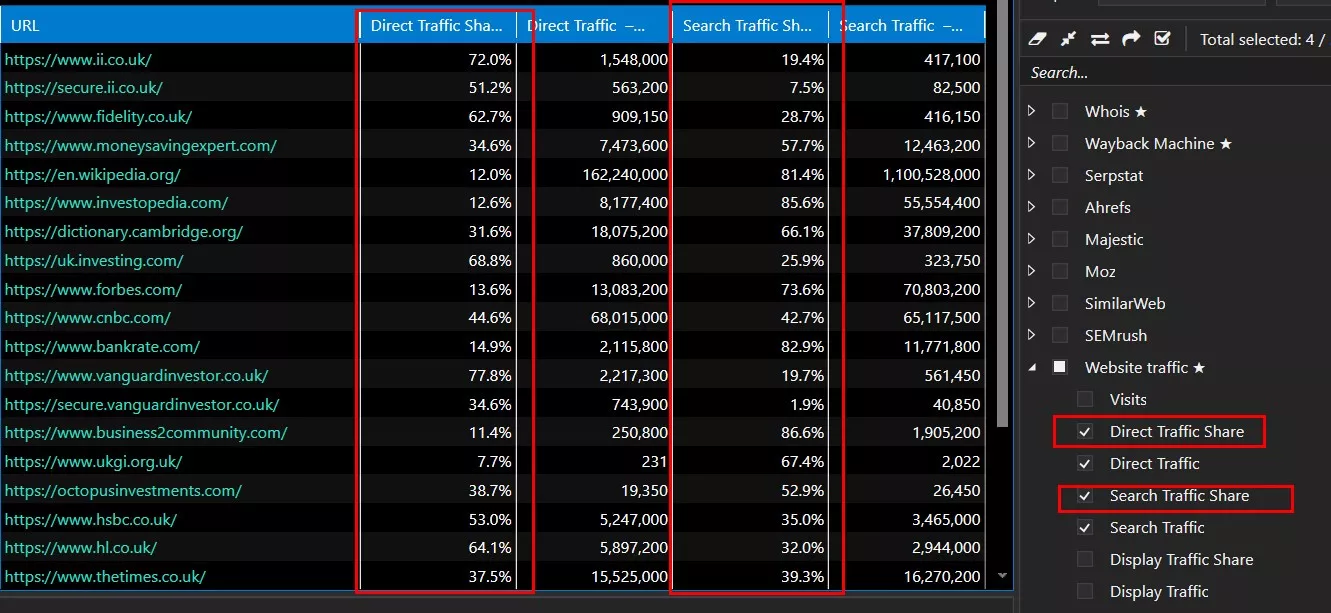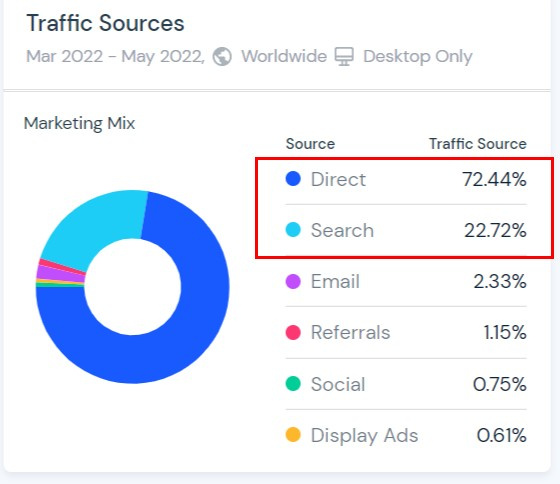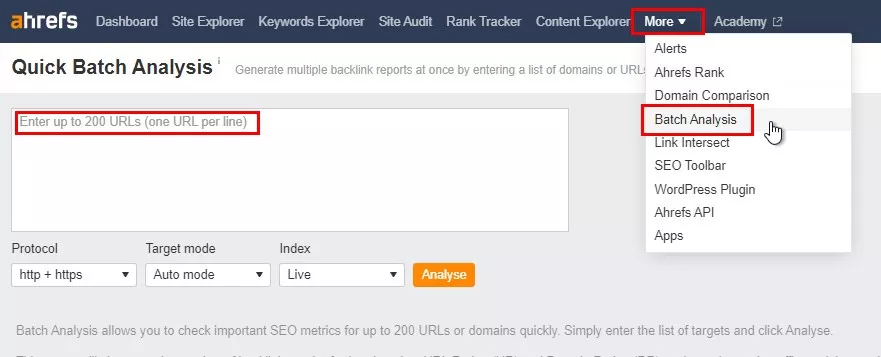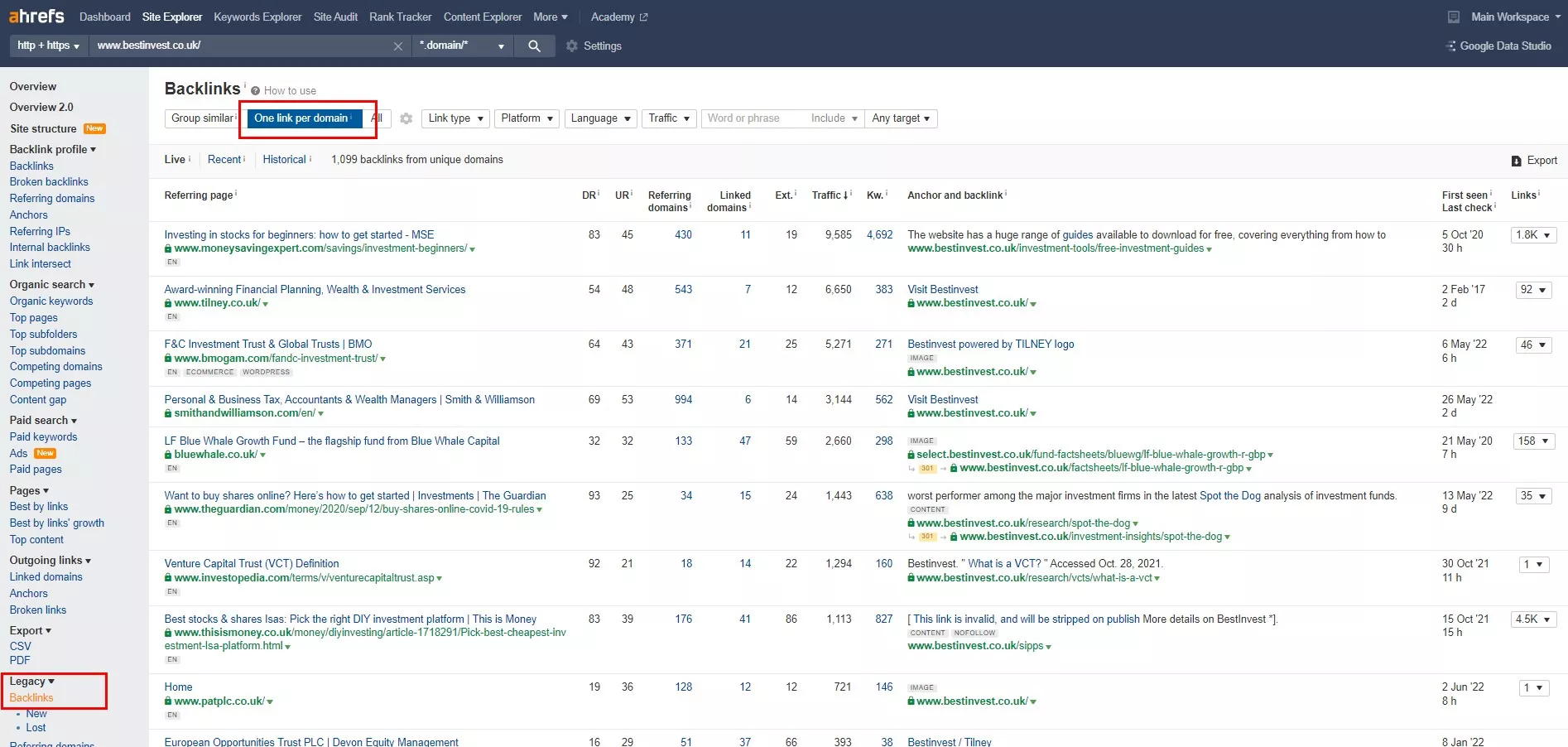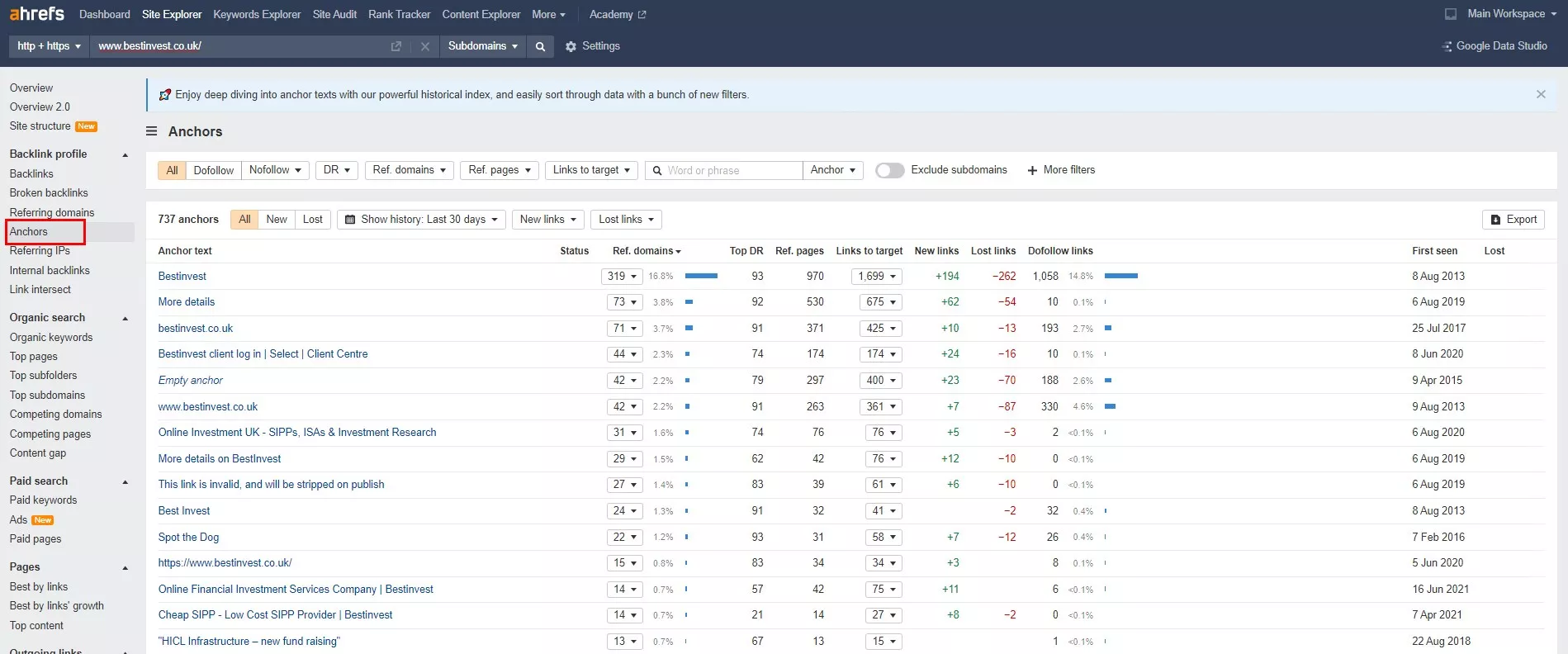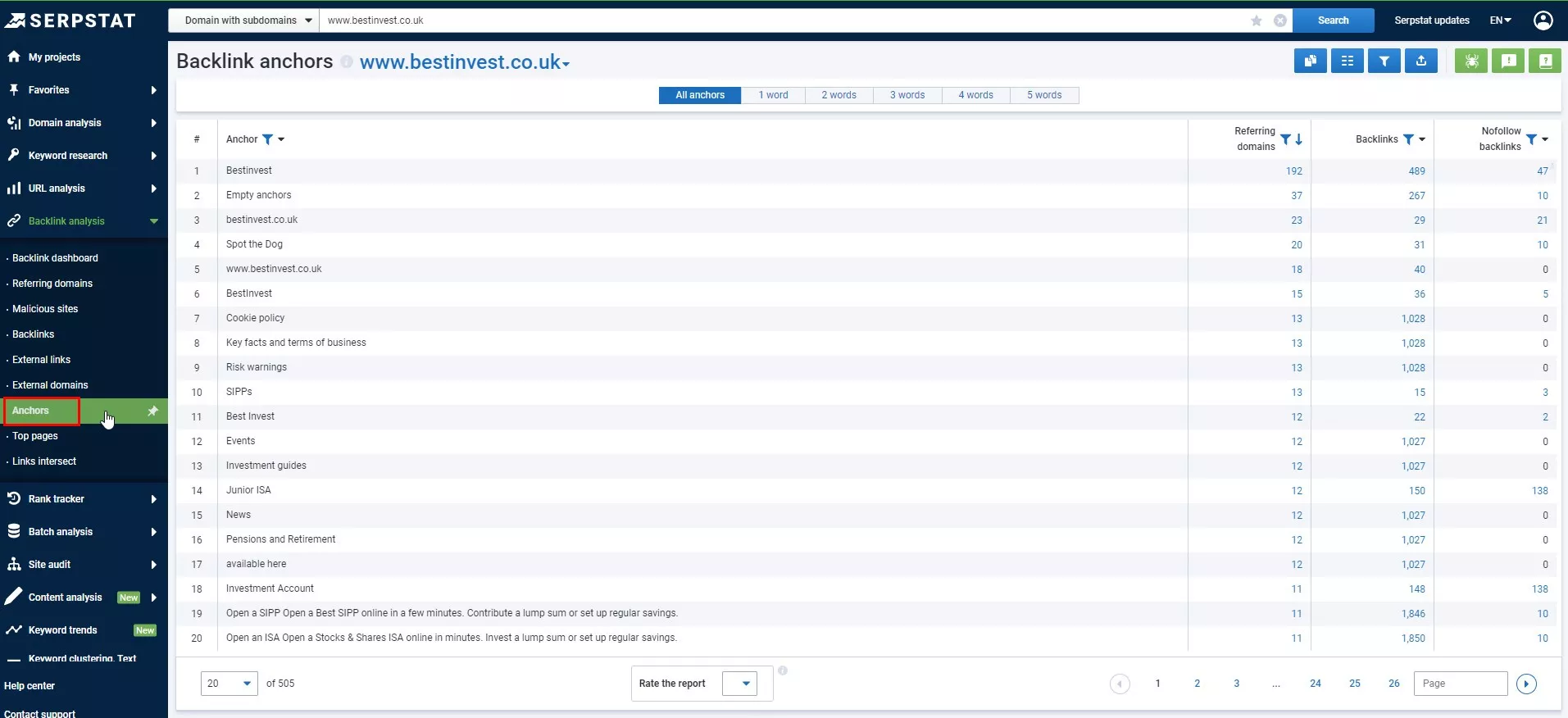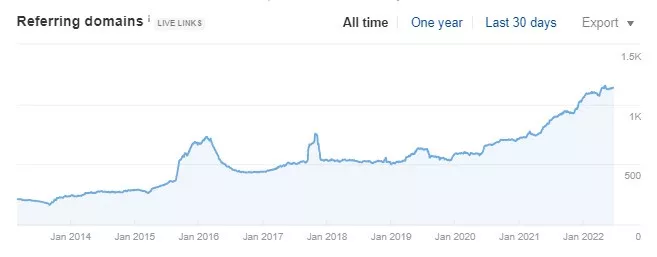Websites always need external links from third-party resources. According to Google's help, they can partly affect your site's ranking and accurately determine whether the site is beneficial and interesting for users. There are different ways to get backlinks. We propose discussing methods to get outreach links on the UK-based investment company's example.
But first, a few words about the technique itself.
Outreach Promotion in Detail
To use outreach, SEO-specialists place external links on the referring domains, which is necessary for SEO promotion and website ranking. They must establish contacts and negotiate with administrators or resource owners.
This technique is known as
This “naturalness” results from some outbound promotion features:
- links are placed on dedicated resources in unique thematic publications that may be useful to the referring domain’s visitors;
- when creating backlinks, you improve your website search position, coupled with additional traffic due to clicking on referring domain links, and positive PR effect;
- there is a high probability that the sites you found are not engaged in the systematic links sales but place them selectively, preferring the high-quality ones. The mentioned above can be understood by the outgoing link profile and the outgoing and incoming links ratio (I’ll tell you in more detail later), which means that the value of the placement increases, and the risk of falling under sanctions due to links on sites, on the contrary, is lower;
- more chances, if necessary, to make changes to the posted material or links to them, since there is direct contact with the administrator or the site owner;
- There can be many referring domains that match the parameters, but not every site will agree to place a link on your preferred conditions. So getting outreach links requires more work and time;
- for example, placement prices are higher than on many platforms..
9 Phases of Link Building Strategy
- Collect key queries to search for sites in the search engine results.
- Collect sites from the search results for the collected search terms and search for sites through the analysis of competitors' link profiles - where they place their links.
- Determine the relevance and quality of the collected resources.
- Collect email addresses of site webmasters.
- Make a request for the cost and link placement conditions.
- Select relevant sites by price and metrics.
- Prepare content considering the site requirements.
- Place and verify material and links.
- Analyze link placing results.
In this article we suggest the entire strategy on the investment company site example. The company is located in the United Kingdom.
The subject relates to YMYL (Your Money or Your Life) sites that could potentially affect well-being, health, financial stability, or safety. Google has strict requirements for them, so special attention is needed for general optimization and link referrers selection in particular: selecting only high-quality and trusted sites is essential.
Some resources may refuse to post financial content or ask for a much higher price which is another hurdle on your way. And there are not so many relevant sites in the United Kingdom domain.
Key Queries Collection for Sites in the Search Engine Results
Make a keywords list to search for platforms. Don’t consider commercial search terms since their search results show competitors' sites, not sites with informational articles, media, or thematic news portals.
Select marker queries that most accurately describe the site. Then collect other keywords from them. You can use the Google Keyword Planner (if your Google Ads account is paid on time) or the Serpstat tool.
All search terms you collected must be cleaned of irrelevant search terms without frequency.
The frequency is indicated only to determine the search term importance, and we will not need it during the parsing.
Search terms examples for which it was worth collecting sites:
Searching Promising Sites For Link Building
Compiling sites from the search result page by the collected search terms
You can use the PC Parser tool in Netpeak Checker to find sites based on managed search terms.
- In the “Requests” field, enter the collected semantics. You can also use search operators and the Prefix field to apply the same operator to each query.
The following search operators are suitable for site selection:
- allinanchor - will find pages that contain all the specified keywords in the link anchor;
- allintitle - will find pages that contain all the specified keywords in the title;
- allintext - finds pages that contain all the specified keywords in the text;
- inurl - will find pages that contain the specified keyword in the URL. When searching in the CIS regions, this operator can be replaced entirely by the allintitle operator.
- Choose the Google search engine in the settings. Then set the maximum possible number of results and all the proposed types of results (particular SERP elements, advanced and paid results). There may be few relevant sites in the United Kingdom.
In the advanced settings, choose the geolocation for the Google search engine in Great Britain (you need to select a location suitable for your website), the English language, and also check the hidden results collection to get more data from the search, if available.
Read more about SERP scraping in Netpeak Checker.
- After collecting the data you’ll receive a list of pages from the Google search results, grouped by queries.
- Next, you need to click on the “Move hosts” button to get a list of unique domains in the main table. Some indicators determine their relevance and quality.
You can also collect pages for link building from the search engine results for queries using Serpstat. The “Top by keyword” report shows the top 100 Google search and advertising results for the searched keyword.
Search For Sites Through the Competitors’ Link Profiles Analysis
Another option for finding a referring domain in the outreach process is to analyze competitors' referring domains.
Serpstat and Ahrefs can do this using the “Referring Domains” report:
Relevance and Quality of Referring Domains. Main Criteria in Link Building Strategies
Google says that ranking is more influenced by the quality of links and less by their number. The difficulty is that there is more than one criterion that determines the site's quality. Indicators should be considered comprehensively. The higher they are, the better, of course, but the price will undoubtedly be high at the same time. And the only one perfect site for the entire available budget is unlikely to have an effect. The task is to find optimal referring domains in terms of price-quality ratio.
The criteria below are described not in terms of importance but based on the convenience of the check order. For example, it would be more rational to manually check the topics and content of potential referring domains before that removing sites with low numerical indicators collected automatically.
When analyzing numerical data, their absolute accuracy is not important. The main thing is to take data according to one criterion from one source for all sites so that the error is the same and does not affect the results.
The main outreach tools for batch collection of metrics are Netpeak Checker and Serpstat.
Where is your audience?
When selecting referring domains for your website, you should focus on sites from the same region where your target audience is located:
- with the corresponding country code top-level domain(s);
- with top-level domains (.com, .net) that receive most of their traffic from the same country(countries) as the site for which referring domains are selected.
Regarding referring domains, our UK-based client left sites with the .uk domain and top-level domains, the primary traffic coming mainly from Great Britain.
For a list of URLs, the region can be checked in Netpeak Checker by selecting the Main Country option in the Website Traffic section.
You can check the main region manually, for example, using another outreach tool - SimilarWeb.
And if it does not provide data, use the SimilarTech Prospecting extension, where the data source is SimilarWeb.
The next step in link-building strategies is to remove domains with an inappropriate region from the list and check other metrics.
Site traffic
The amount of total traffic to a site gives an idea of its popularity. In addition, if the traffic is low, the likelihood of clicking on our link is limited, as well as the opportunity to receive additional traffic.
For a list of sites, monthly traffic data can be obtained using Netpeak Checker. In the parameters, select the item “Visits” and start collecting data. The results will look like this.
Another way to check the total traffic for a list of sites is the Batch Domain Analysis report in Serpstat. Enter a list of domains, and mark the “Traffic” item and the desired region (United Kingdom).
You can manually check the total site traffic per month using the SimilarWeb extension.
SimilarWeb may not provide data for sites with low traffic. In this case, the SimilarTech Prospecting extension will help again, having SimilarWeb as a data source.
It is crucial to remove sites with low traffic from the list. It depends on the subject and region of promotion.
Traffic Source Ratio
In the outreach process, it is important to pay attention to traffic sources, namely the share of search (organic) and direct traffic. Organic traffic gives an idea of the “relationship” of search engines to the site, while direct traffic gives an idea of the authority among users, their interest and loyalty.
You can get data on the share of traffic using outreach tools SimilarWeb or Netpeak Checker: in the parameters, select the items “direct traffic share” and “organic traffic share” and start collecting data.
Manual information about the ratio of site traffic sources can be viewed through the SimilarWeb browser extension.
Or through the SimilarTech Prospecting extension, if SimilarWeb data is not available for display in the free version.
Removed from the list of sites with a share of search and direct traffic less than half of the total.
The Impact of Domain Rating (DR) on Backlink Quality
DR is a metric from Ahrefs that shows the strength of a website's backlink profile compared to other sites in the Ahrefs database on a 100-point scale. As Ahrefs himself points out, “Domain Rating doesn't take into account any other variables like link spam, traffic, domain age, etc”. High DR means high “link popularity” of the site and high link opportunities. At the same time, among the backlinks of a site with a high DR, there may be links that Google does not take into account but which take into account the domain rating.
Since DR can be artificially increased, when choosing potential referring domains, you should not focus on the absolute value of the metric for a particular site but compare it with other similar sites. And also analyze backlinks.
For a list of DR sites, contact Ahrefs directly. You must select Batch Analysis, enter up to 200 domains at a time, and upload results important for SEO.
You can get ranking data for one specific domain.
Next, you need to remove sites with low DR from the list because referring domains will reduce the overall quality of backlinks. Among the received data, the domain rating ranged from 2 to 84.
The Ratio of Inbound and Outbound links
Potential referring domains should have more inbound links than outbound ones, the resource, if it sells links regularly, does it selectively, and placement on it will not cause a search engine to filter out your website.
You can check the number of incoming and outgoing links of sites in Serpstat using the “Link Analysis” report.
After collecting numerical indicators and already partially “cleaning” the list of sites, you can start manual analysis referring domains for outreach:
- checking topics and content;
- inbound link profile;
- backlink anchors;
- their growth dynamics.
Topic and content
The subject and content of the site are one of the main selection criteria. The best link building practices involve the referring domains selection with the maximum similarity of topics with the site being promoted. You need to check them manually, so it's more rational to do this when some resources have already been screened out.
What to look for:
- whether the site is one of your competitors - in this case, of course, the link will not be placed;
- whether there is a suitable section in the general media for posting your article;
- the general appearance of the site and the clickability of elements on the site;
- whether there are any intrusive ads;
- design of publications - is the text structured, are there any typos in it.
Referring Domains Backlinks Analysis
It is worth looking at the backlinks of potential referring domains to make sure that the placement is safe and that spam and low-quality sites do not massively link to the resource.
In Ahrefs, it's best to view incoming links in the “One link per domain” mode in the “Backlinks” report to get an idea of the site's link profile.
But if there are few backlinks, you can look for some unique ones.
Ahrefs provides the Backlink Checker tool for free, but it only shows the top 100 backlinks.
When analyzing, you should pay attention to DR (Domain Rating) and UR (URL Rating): the more is, the better. Advice: select sites in the link profile of which most of the resources were with a DR of 25.
Backlink Anchors
Anchors of backlinks pointing to a potential referring domain should be natural and not cause suspicion among search engines. Preferably the prevalence of anchors in the form of the site name, and the share of commercial anchors should be minimal.
Anchors can be viewed in Ahrefs in the corresponding report.
And also in Serpstat.
Link Equity
It is better to track the growth of links according to the schedule: it should be smooth, without spikes.
How to do this: in Ahrefs you can see a graph in the Overview report.
Contact a Site's Webmaster
Having selected the most relevant and high-quality sites on which you would like to place links based on a set of criteria, it is necessary to collect their email addresses. The process of collecting contacts can be automated using Netpeak Checker. For this you need:
- A Google spreadsheet file prepared in advance using the formula =CONCATENATE pages with contacts / contact-us fragments, since contact information is not always indicated on the main page of the site.
- Add all the resulting URLs to Netpeak Checker, mark the “Email addresses” item in the parameters, and start collecting.
- Export data and delete generated pages for which contacts were not found.
- Manually search for difficult-to-collect contacts from your sites on the list. If there is no email information on the site, you need to find some other ways of communication (for example, a feedback form).
Compiling a Letter to Webmaster
After collecting email addresses, you need to write a letter to site representatives. Most often, these are webmasters. The email outreach stage with a well-composed message to the webmaster increases the chances of successful cooperation. It is important to clearly indicate in the subject and body of the letter the purpose of the appeal - the placement of an eternal link. In addition to the price, you should also ask about the type of link being placed (dofollow / nofollow / sponsored), content language (relevant for multilingual regions), article size, and payment method.
If the site conditions are not suitable, it is worth reporting this in a letter.
Selection of Relevant Sites by Price and Metrics
When there are both metrics and the cost of placement, you can finally decide on the relevant sites for you based on the ratio of price and quality. Advice: remove sites with meager rates from the list (with DR less than 25 and traffic less than 5 thousand per month because they can make the outreach process inefficient and adverse).
Further, with enough options for comparison, you decide on whether to place or not your link on a particular site, having compared its metrics and cost with others.
There are several options here:
|
Low performance |
High performance |
|
|
Low price |
You can periodically be placed on sites among other referring domains with higher rates. |
It is worth studying the sites in more detail (content, backlinks). If everything is good, you can post. Referring domains in this category are considered a priority in link building. |
|
High price |
Should not be posted. Referring domains in this category are not interesting for SEO as long as there are alternatives. |
It is worth starting from the available budget. We recommend that you plan for the frequent use of referring domains in this category when drawing up link-building strategies. Google prioritizes quality over quantity. |
For the convenience of selecting and compiling a monthly list of purchases, sites can be divided into three categories:
- low performance and price;
- high performance and price;
- high performance and low price.
You should mix them - so the reference mass earned backlinks will be balanced.
Write an Article Taking Into Account the Requirements of the Sites
After selecting the sites that are suitable in terms of price and quality, it is necessary to prepare content taking into account their requirements.
It is necessary to make Terms of Reference for a copywriter, indicating the following:
- the topic of the article;
- the language of the article (if necessary);
- text volume;
- keywords;
- the link you placed and the anchor, whether it is possible to decline the anchor, and in what part of the article it is desirable to place the link (as a rule, closer to the beginning);
- requirements for meta tags and article title (if necessary);
- whether H2-H3 level headings are needed;
- the main theses of the article;
- requirements for the text design (numbered and bulleted lists, tables);
- the presence of images, the need to prescribe alt and title attributes for them;
- the percentage of the uniqueness of the article and the verification service;
A quality technical requirement is a key to successful outreach marketing for your site.
Placing an Article on a Referring Domain
The finished article is sent to the webmaster of the site. After placement, it is important to check:
- Link correctness. The most common mistakes are placements with the HTTP protocol instead of HTTPS, with an extra slash at the end, or vice versa, without it, so that a redirect occurs during the transition.
- Link attributes (dofollow or nofollow - depending on the arrangements). In the first case, you can index links, getting some additional link weight.
- Is the page of the article in the noindex tag closed?
- Text on the points of the technical requirement (are the headings marked up, are the alt and title attributes for images spelled out, are lists and tables displayed correctly, etc.).
You need to contact the site representative and ask for corrections if there are any errors. Usually, changes can be made quickly - within a few hours. If everything is placed correctly, thank you for posting.
Link Building Results Analyse
Two or three months after your link placement, it is worth checking the position of the page by an anchor (if there is an anchor link) and traffic.
Positions can be checked in Google Search Console for the last two months and compared with data from 2 months before the placement.
Page traffic data for two months can be obtained from Google Analytics in the Landing Pages report by looking at the number of new users for the specified date range. Also, in the “Traffic Sources - Channels” report of Google Analytics, you can see the sources of referral traffic and understand whether there were transitions from the referring domain following the posted link.
Key highlights
Outreach is one of the safe link building methods. If you select relevant, high-quality sites and prepare helpful content, you can significantly improve the position and traffic to the site.
The main criteria for selecting link-placement sites are:
- the main region of the potential referring domain;
- site traffic;
- ratio of traffic sources;
- Domain Rating;
- the ratio of incoming and outgoing links;
- subject matter and content;
- site backlinks;
- anchors of incoming links;
- link growth dynamics.
The algorithm for getting links:
- Collect keywords.
- Collect a list of sites for these queries or through competitor analysis.
- Determine the relevance and quality of the collected resources and screen them by your criteria.
- Collect email addresses of site representatives.
- Send letters to find out the cost and conditions of accommodation.
- Select relevant sites based on the ratio of price and metrics.
- Prepare content, considering the sites' requirements.
- Place and verify articles and links.
- Analyse link building results.
Related Articles
How to Set Up Consent Mode in GA4 on Your Website with Google Tag Manager
Let's explore how to properly integrate consent mode in GA4, configure it for effective data collection, and at the same time comply with GDPR and other legal regulations
Display Advertising Effectiveness Analysis: A Comprehensive Approach to Measuring Its Impact
In this article, I will explain why you shouldn’t underestimate display advertising and how to analyze its impact using Google Analytics 4
Generative Engine Optimization: What Businesses Get From Ranking in SearchGPT
Companies that master SearchGPT SEO and generative engine optimization will capture high-intent traffic from users seeking direct, authoritative answers

